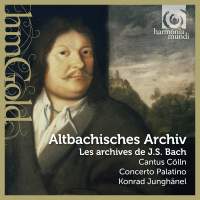Texte paru dans: / Appeared in: |
|
|
Reviewer: Michael
Carter At the bottom of the first column on page 774 of The New Grove Dictionary of Music and Musicians (Vol. I), the word “Bach” is followed by this laconic and unobtrusive phrase: “German family of musicians.” An understatement indeed when one considers that from the 16th through the mid-19th centuries, the line produced over 80 musicians of every size, shape, and description, including organists, court musicians, and Kapellmeistern. By the 17th century, the Bach family was so pervasive in Thuringia that the name “Bach” had become synonymous with “musician.” In many municipalities, the Bachs held prestigious positions and it was not uncommon for the successor to a position held by a Bach to be another Bach. If the rise of the Bach family to musical prominence was gradual, the decline was swift by comparison, due in large measure to social changes brought about in the late 18th century. Many genealogists as well as musicologists have been curious about the family’s phenomenal proliferation of musical ability for over seven generations and its subsequent decline in the era of Romanticism. That’s correct, Romanticism. The musical tradition within the Wechmar line of the Bach family—the branch that gave rise to Sebastian—came to an end in 1845 with the death of Sebastian’s only musical grandson, Wilhelm Friedrich Ernst. The Hessian stem of this phenomenal family tree ended with the passing of Johann Georg Bach (1786–1874). Two members of the family—Johann Bernard (1676–1749) and Johann Lorenz (1695–1773)—are not represented in this set as their legacies include only instrumental music, and many noted Bach scholars question the claim of attorney Johann Michael Bach (1745–1820) of Gustrow to the heritage of Sebastian. Less than a dozen of the 80-plus Bachs that can be documented as being antecedents or descendants of Sebastian ignored the familial calling. A number of these were tempted by and chose to pursue other creative paths, including poetry and painting; others were not involved in the arts at all. But by and large, the family members were astutely aware of their place as keepers of a flame and it was with this in mind that Sebastian—the greatest of them all—described his children in a letter to a friend as born musicians. With characteristic meticulousness, Sebastian researched his ancestry and musical heritage and over a number of years compiled a collection known as Altbachisches Archiv, a collection of manuscripts by his most important ancestors. The compilation—consisting of approximately 200 sheets of ornately decorated staff paper, now yellowed and brittle—was acquired by the Berlin Singakademie in the 19th century and published in 1935—the 250th anniversary of Sebastian’s birth—in two volumes. The original manuscripts were believed lost amid the rubble and devastation of World War II, but in actuality they were spirited away by the Soviets and for more than half a century lay hidden in the Ukrainian State Archives (Kiev), thus depriving the larger musical world of access to an important chapter in the history of one of the Western culture’s most gifted musical families. All of the works in the collection, save one (Johann Christoph’s wedding cantata, Mein freunden, du bist schön) are sacred in nature. The wedding cantata exposes the less-pious side of the composer’s temperament, even though it concludes with an entreaty to the Almighty who has “fed us richly and shown us thy love and devotion” to “Now give us also prosperity, good health . . . and peace.”
Konrad Junghänel and Cantus Cölln emerge from the artistic pack with a new release about once a year, but that annual contribution to Harmonia Mundi’s august discography is a much-anticipated event in early music circles. Junghänel’s recordings have acquired a reputation for scrupulous scholarship and stunning artistry that is beyond reproach. Here as in previous recordings of this sort of repertoire, Junghänel takes the approach of American musicologist Joshua Rifkin, i.e., one voice per part, for both vocal and instrumental lines. The result is unprecedented clarity of texture and picture-perfect balance. Junghänel’s “chorus” consists of a maximum of 10 singers, each a soloist in their own right and each thoroughly grounded in the conventions associated with this music. Their delivery of the material is accurate, assured, and nimble where necessary. Vocalists and instrumentalists alike are mindful of and attentive to the music-making of their partners so the parts are beautifully blended. There may be some critics in the world who still turn up their noses at this minimalist approach to the Baroque repertoire, particularly the music of Bach, but it is no longer a fad. Rather it has become an accepted practice among the cognoscenti. Harmonia Mundi’s sound is remarkable, clear, and resonant, exposing the beauties of the part-writing and bathing every note in an exquisite aura; the whos, whats, whens, wheres, and whys relevant to this material are scrupulously laid out in copious, intelligent, and readily comprehensible annotations provided by noted Bach scholar Peter Wollny. This is an unmistakable treasure for the lover of Baroque vocal music or the devotee of Bach, but duplications aside, you should acquire the other recordings I cited to fill in some of the blanks. Without question, it will head my Want List this year. | |
|
|
|
|
|
|
|
Cliquez l'un ou l'autre
bouton pour découvrir bien d'autres critiques de CD |
|




